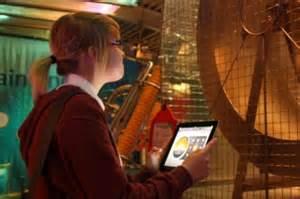Widgetized Section
Go to Admin » Appearance » Widgets » and move Gabfire Widget: Social into that MastheadOverlay zone
Experiential Learning: So What?
The views expressed are those of the author and do not necessarily reflect the views of ASPA as an organization.
By Angela Pool-Funai
February 20, 2015
 One of the aspects that I appreciate most about the field of public administration is its practitioner-focused approach for a wide range of public service careers in government and the nonprofit sector. Educators training up the next generation of public service professionals can provide practical, hands-on application for students through experiential learning activities and assignments in the classroom setting. In this new quarterly column, I look forward to discussing experiential learning, sharing best practices and success stories and hopefully starting a dialogue through your comments and feedback, so that we can learn from each other.
One of the aspects that I appreciate most about the field of public administration is its practitioner-focused approach for a wide range of public service careers in government and the nonprofit sector. Educators training up the next generation of public service professionals can provide practical, hands-on application for students through experiential learning activities and assignments in the classroom setting. In this new quarterly column, I look forward to discussing experiential learning, sharing best practices and success stories and hopefully starting a dialogue through your comments and feedback, so that we can learn from each other.
Before making a career shift into the faculty side of academia last year, I worked in research and grant writing for many years in the nonprofit sector – mainly higher education. Although the work was quite challenging, I enjoyed having a behind-the-scenes role in bringing external funds into my university. Unfortunately, grant writing often gets a bad rap for being cumbersome and difficult to do. But I submit that if you can answer one key question, then you are on the right track toward writing a successful grant proposal. That question is: So what?
In the grant world, the “so what?” question explores why a funder should consider your proposal over competitors’ applications. What sets your project apart from the masses? What positive, measurable impact will your project make? On the contrary, what would be the downside if your project is overlooked? If you know the answers, then you are better poised to convince a potential funder to support your project.
To me, this question is also at the crux of experiential learning. It’s one thing to learn about history, theories and facts, but it’s another thing entirely to have that knowledge base under your belt and then be tasked with figuring out what to do with it. MPA and DPA programs are often targeted toward in-service, mid-career professionals. These students need to know more than facts and figures. They need to know how to analyze and break down information into real world application. That’s where experiential learning comes in.
The ELM Cycle
The four-part Experiential Learning Model designed by David A. Kolb and Roger Fry features a cyclical path of gaining concrete experience, making observations of that experience, developing abstract concepts and testing those concepts in new scenarios. The process of experiential learning is not intended to be a one-stop shop; it is an ongoing, evolving endeavor. As you gain insights from one experience, you might apply them to the next and so on. Experiential learning can be very immersive, such as an internship, but it doesn’t have to be. In-class assignments and activities may also provide an environment for experiential learning.
For example, I teach an MPA class in public sector economics. It is more commonly known as the “budgeting class.” Students are often intimidated by it because the term budgeting conjures up images of spreadsheets and mathematic formulas. It is true that the formal student learning outcomes include things like understanding the macro and micro influences in public budgeting, as well as being able to articulate knowledge of economics principles and recognizing public and private market behavior. However, the course also involves a budget analysis assignment, in which students must select a public agency or department (or a nonprofit organization) and write a paper about its purpose, activities, revenue sources and expenditures, and recommendations for improvement.
Beyond the Classroom
By requiring students to get into the weeds with an agency, department or organization, they have to become intimately familiar with the budget and understand how the entity uses its resources. Last semester, one student was invited to present his findings regarding a municipality’s budget at a city council meeting. Another student was asked to speak to a nonprofit organization board to share her insights concerning their budget. Still another student was invited to meet with the university provost to discuss her analysis of a proposed expansion on campus. These students learned the answers to the “so what?” question and their process of gaining knowledge, interpreting it, applying it and presenting it, provided a much richer learning environment than if we had simply discussed budget examples in class.
Future public sector professionals – our current MPA and DPA students – need to be equipped with practical knowledge to understand how to drill down and find the answers to the “so what?” questions. Our appointed and elected officials, as well as the public, also demand an answer to how allocated resources are being used. Experiential learning activities are a practical, effective way in which we can equip tomorrow’s leaders to gain insight and learn how to find those answers.
Author: Angela Pool-Funai is an assistant professor of political science and public administration at Southern Utah University. Opinions are her own. She encourages feedback and can be reached at [email protected].


 (11 votes, average: 4.18 out of 5)
(11 votes, average: 4.18 out of 5)
Pingback: Weaving Critical Thinking with Experiential Learning in Public Administration | PA TIMES Online